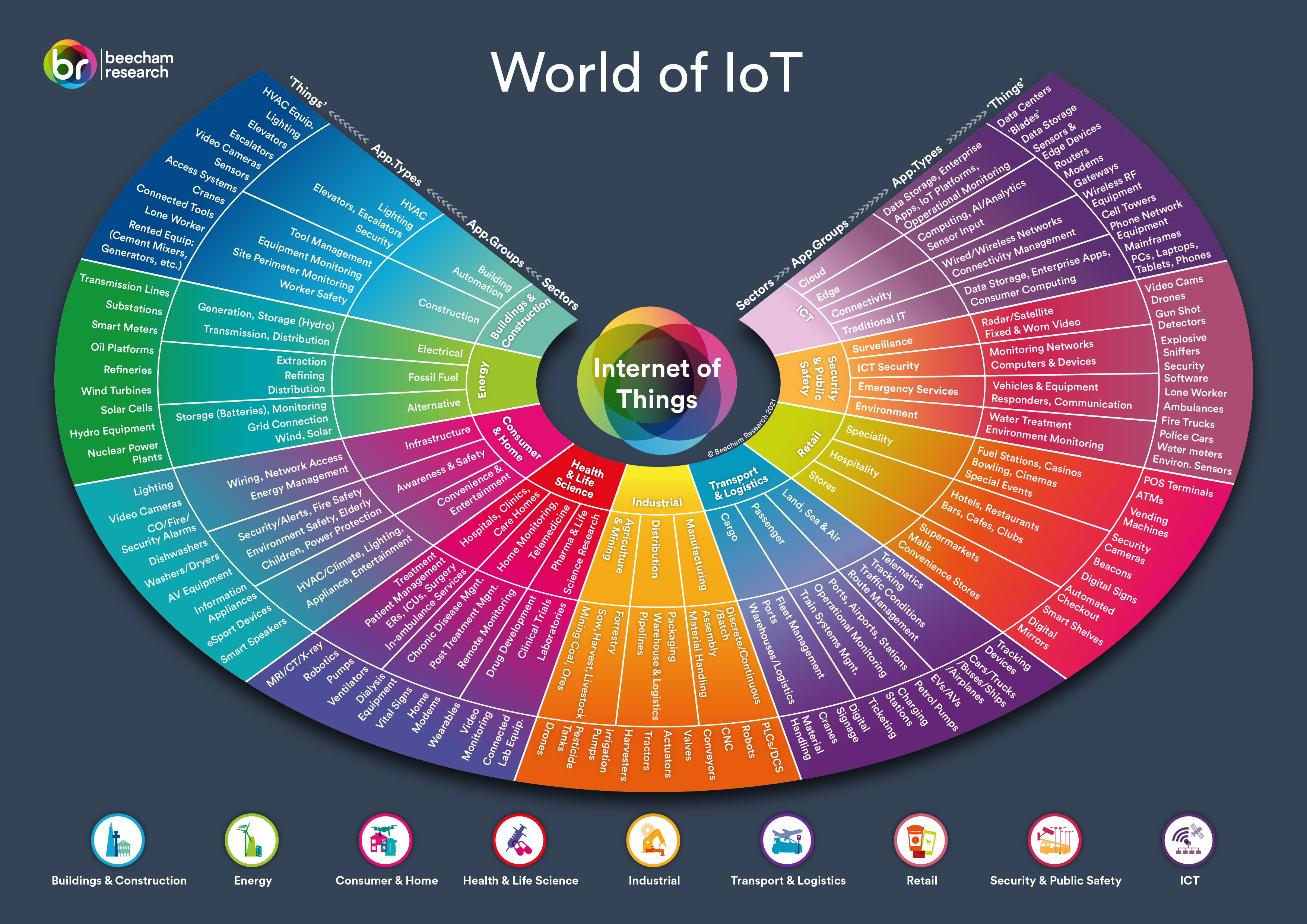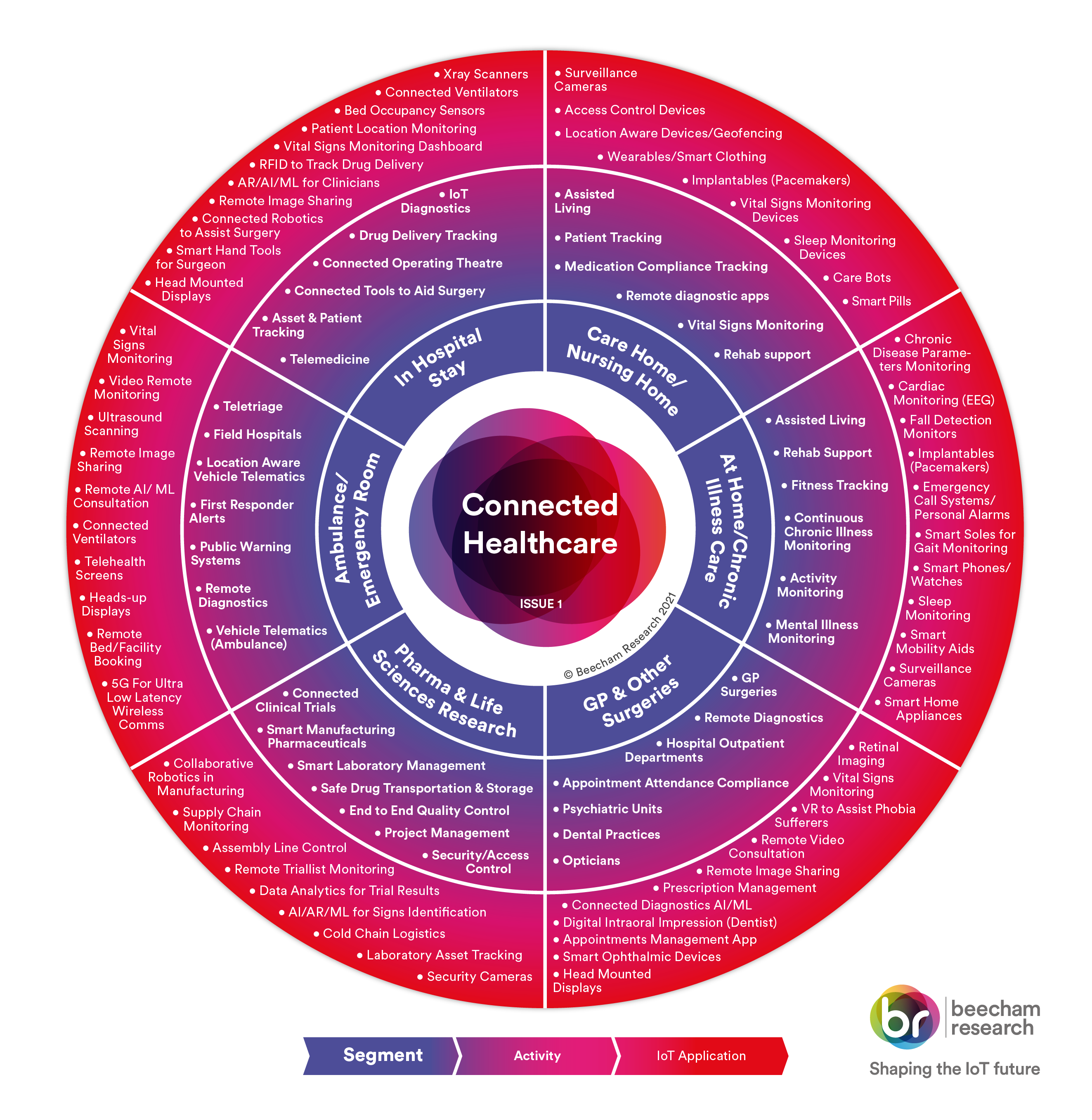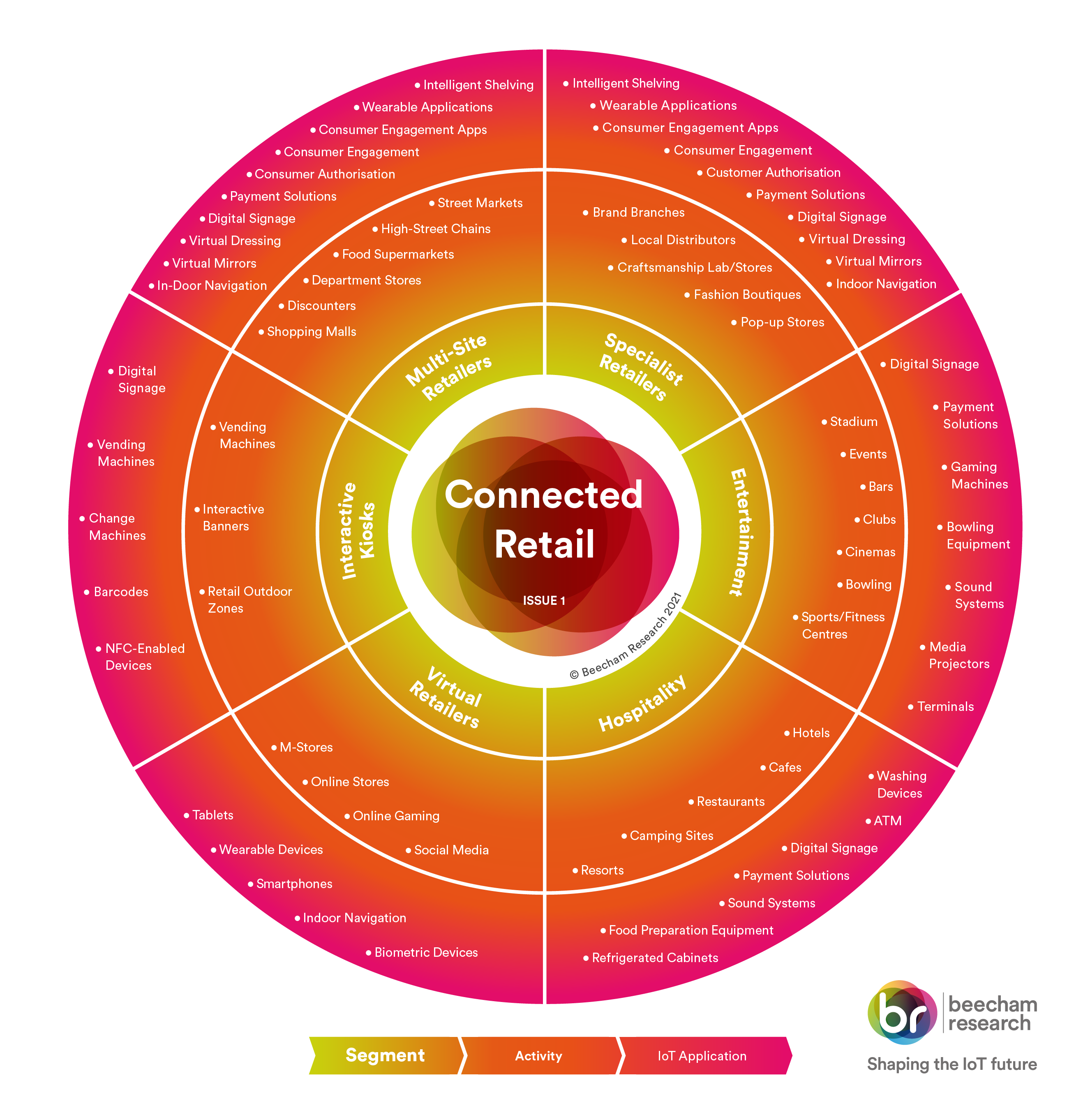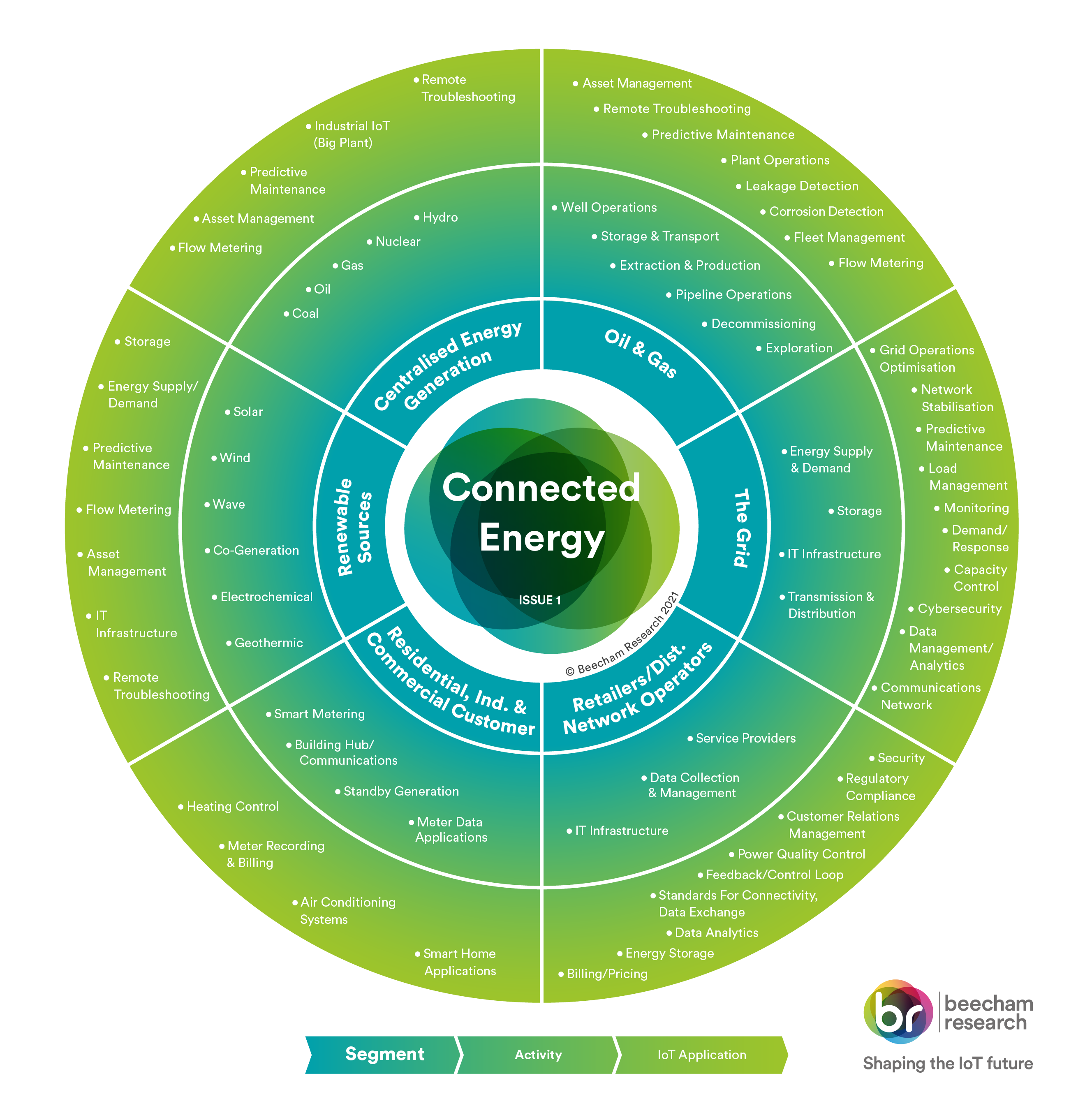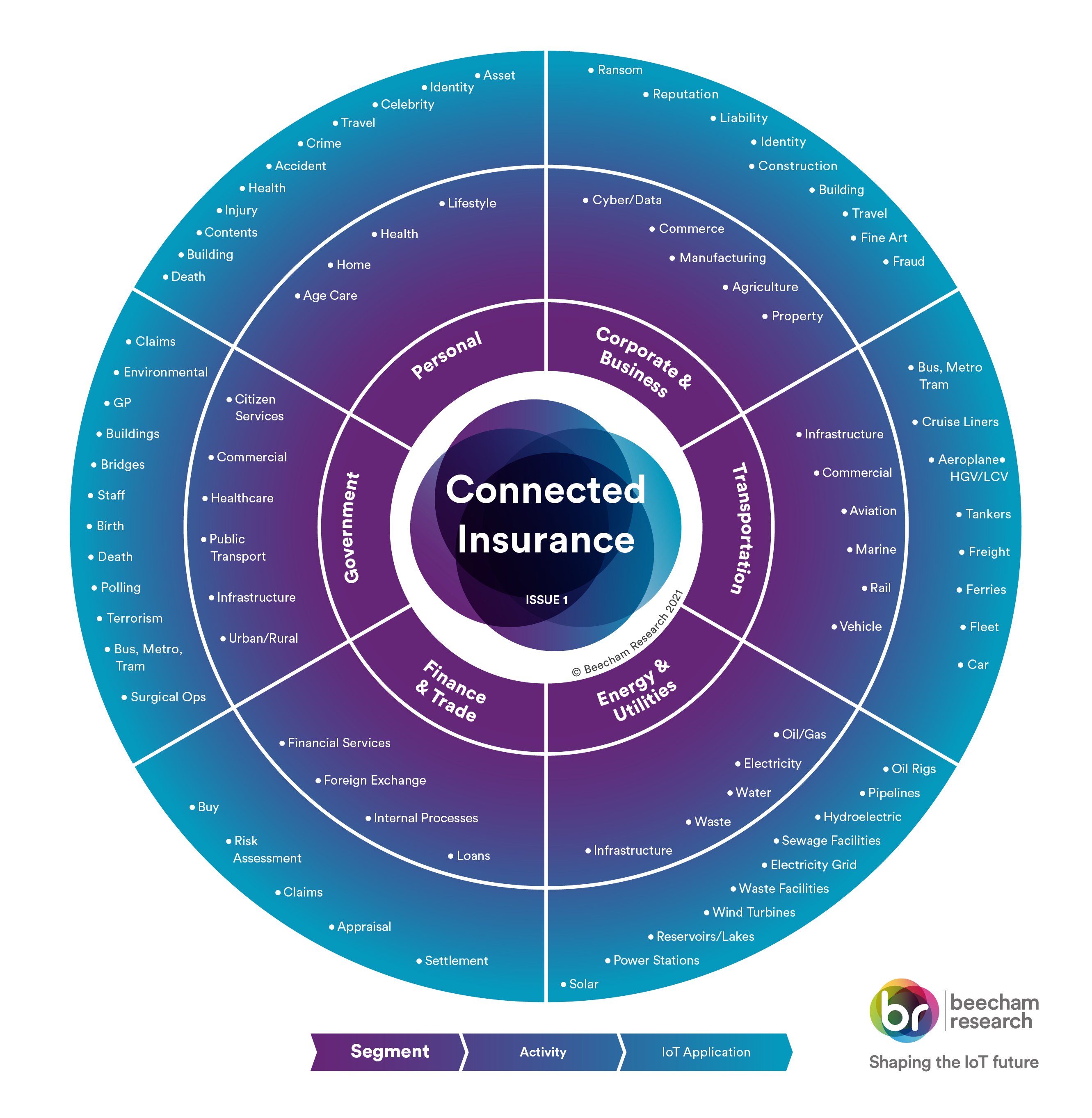Connected Manufacturing Sector Chart
In this chart, the inner layer highlights 6 key segments of operational activity within the manufacturing sector. The middle layer indicates the types of products manufactured in each of the segments. The outer layer then shows examples of the IoT applications and devices used in the manufacture of those products. As a result, the chart provides a cross-reference between operational activities in the manufacturing sector and related IoT applications
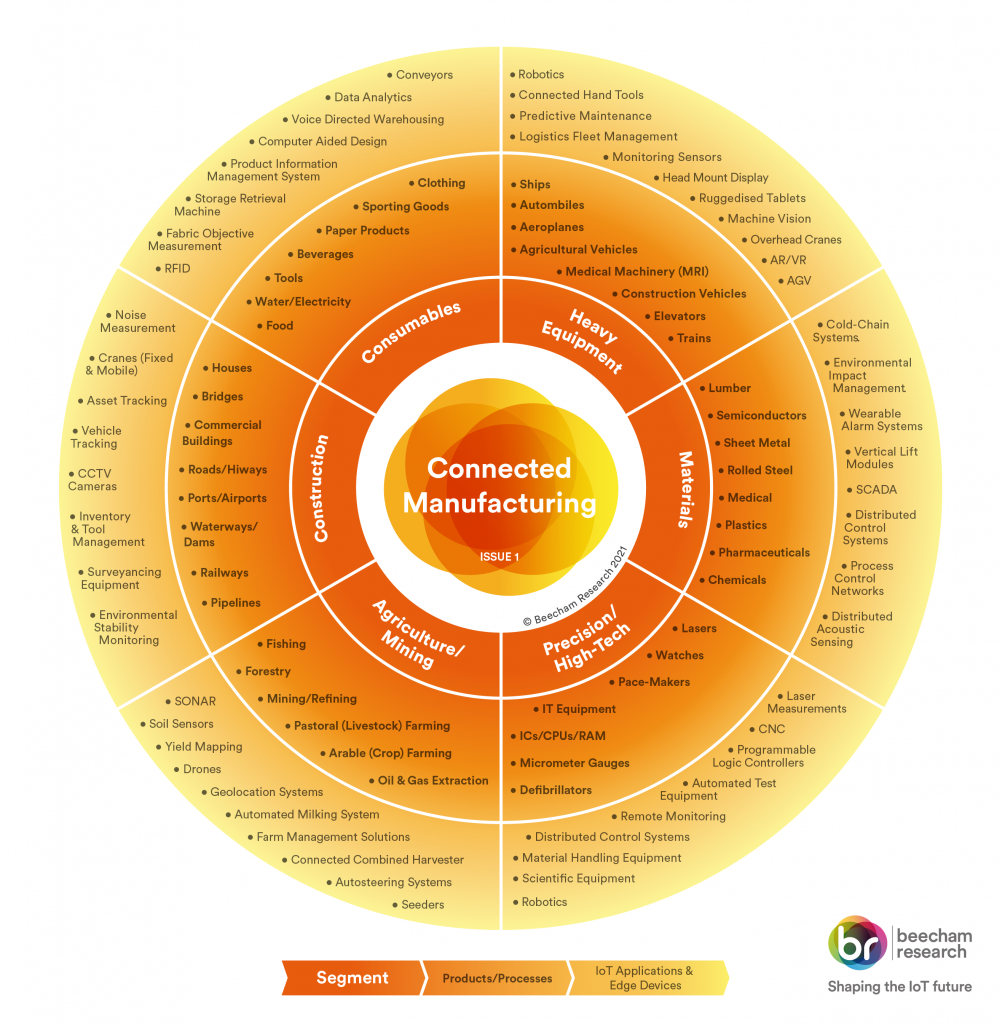
There has been a clear trend towards the deployment on manufacturing floors of networked sensors and intelligent devices. These aggregate real-time production data and process it using edge computing and cloud resources, generating insightful information about the efficiency of production operations. This in turn enables the outputs to be connected to supply chains in real time to respond immediately to required changes.
Enhanced edge computing reflects the need to bring more traditional datacentre technologies closer to the network edge, in order to accommodate heavy workloads and/or large networks of distributed devices. This has led to the development of high-performance edge devices that have computing capability comparable to that found in data centres.
Preventative analytics employs near real-time data, while predictive analytics is based on historic data. Machine learning is an extension of that model: it is able to make assumptions and test and learn autonomously, which is a significant development. It is a branch of Artificial Intelligence (AI) that allows decisions to be made with minimal human intervention.
These techniques illustrate how IoT has a major part to play in the development of this sector

